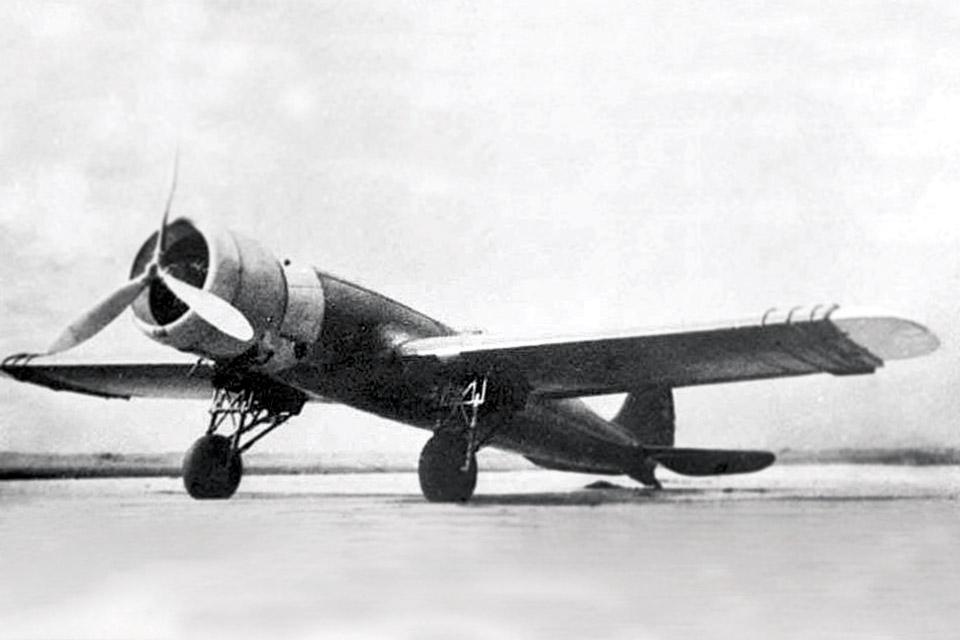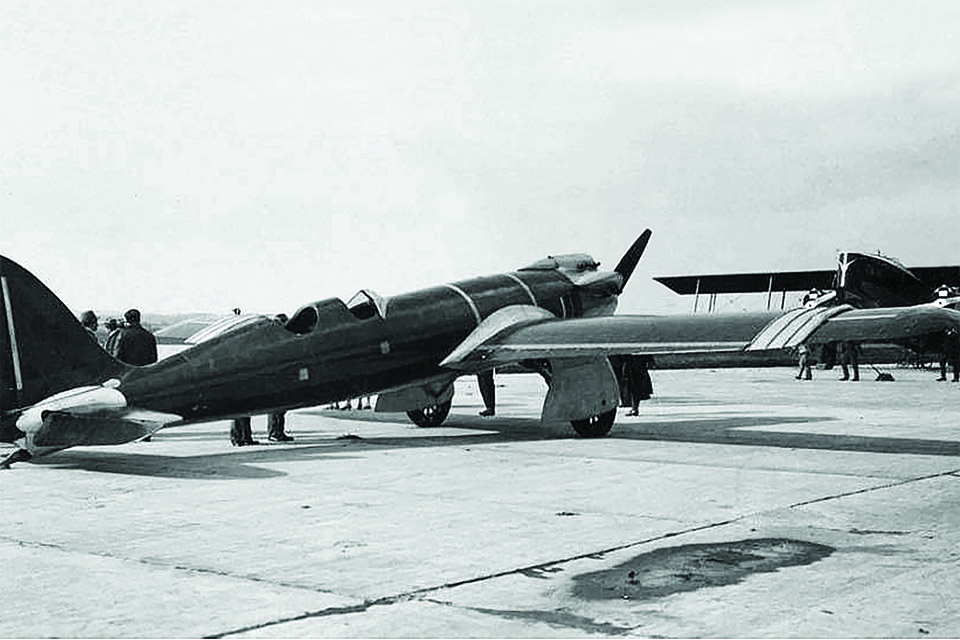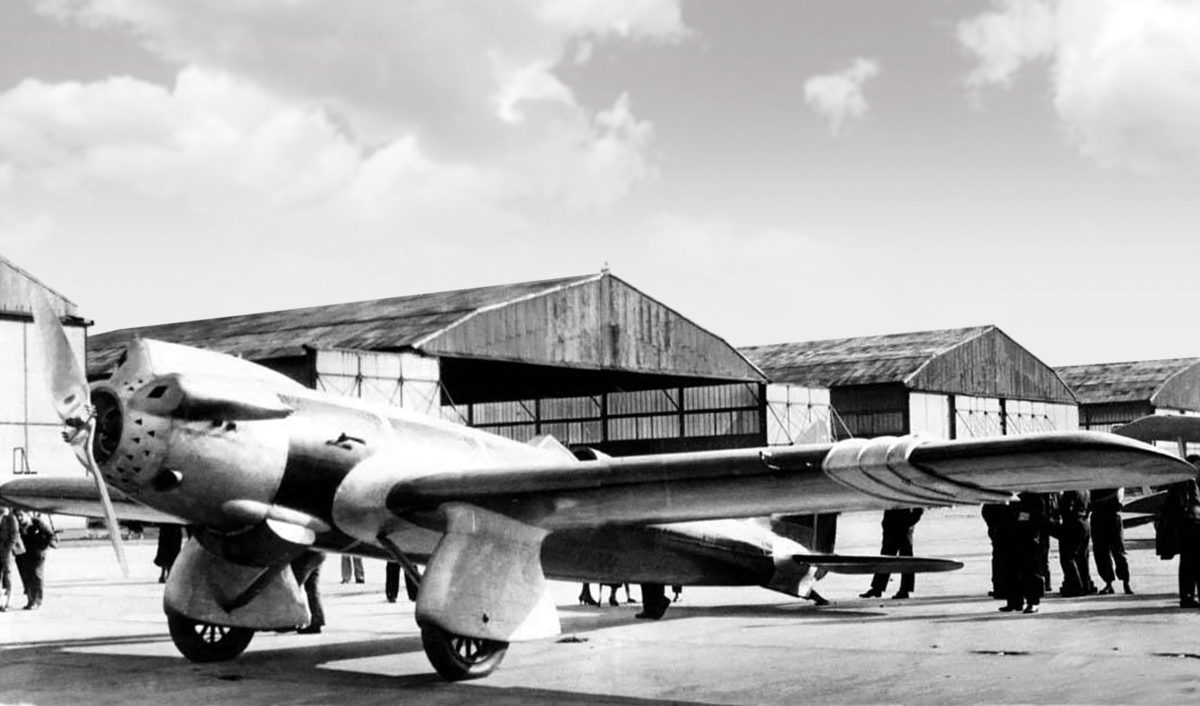The notion of altering the geometry of an airplane’s wings in flight to enhance its performance has long interested aircraft designers. They’ve understood that a plane with smaller wings could fly faster, but larger wings would permit lower stalling, takeoff and landing speeds as well as higher altitudes. Over the years many novel forms of variable geometry have been devised to get the best of both worlds from one set of wings. Among the more unusual approaches was a concept pioneered by Russian engineer Ivan Makhonin (sometimes referred to in France as Jean Makhonine) during the interwar years.
Born in St. Petersburg in 1885, Ivan Ivanovich Makhonin graduated from engineering school before World War I. Dur ing that conflict he helped design a variety of weapons for the Russian military, including rockets, armorpiercing bullets and aerial torpedoes. After the Russian Revolution he worked to restore the national railroad system, including the design of new locomotives. Some of his railroad projects did not work out as well as expected, however, and a new giant airship that he designed ended up being cancelled. Finding himself out of favor with the new government, Makhonin and his wife emigrated to France in 1921.

Makhonin persuaded the French government to back an idea he had for distilling liquid fuel out of coal. He set up a distillation plant in 1926, but it was shut down the next year due to harmful levels of toxic emissions.
In 1929 Makhonin entered the aeronautic field when he proposed an airplane with telescoping wings that could extend in span from 42 feet 8 inches to 69 feet, increasing the wing area from 230 to 360 square feet. French government officials were sufficiently intrigued to fund construction of a prototype.
First flown on August 11. 1931, the Makhonin Mak-10 was a large, two-seat, low wing monoplane. The wings’ center section, which was cleanly faired into the fuselage, terminated in thick rein forced cuffs through which the outer wing panels protruded slightly. Ailerons were attached to the trailing edge of the center section, as was the neatly faired fixed landing gear. The outer wing panels extended and retracted on a set of bearings along the wing spars inside the center section, either pneumatically or, if that system failed, manually. Exactly how Makhonin managed to relieve the stress on the outer panels is unclear.
The May 13, 1932, issue of the British aviation magazine Flight published a detailed article extolling the Mak-10’s unique design: “To us it seems that if one is to derive any worthwhile benefit from a variable wing, the better way to tackle the problem is via the variable span. After all…we know that span loading plays a very large part in the efficiency of a wing, especially at low speeds, where we know that the span loading determines the induced drag. One admires M. Makhonine for a very daring and ingenious piece of work, and hopes that he will be able to continue this interesting experiment.”
The Mak-10 was powered by a single 450-hp Lorraine-Dietrich 12Eb 12-cylinder liquid-cooled engine. Weighing in at 11,023 pounds gross, the aircraft was somewhat underpowered, but with the outer wing panels retracted it reached a speed of 233 mph. In any case, the Mak-10 was never intended for production; it was an experimental testbed to prove the feasibility of its telescoping wing panels.
After four years of test flying, the Mak-10 was returned to the factory for improvements. In 1935 it emerged as the Mak-101 with enclosed cockpits, retractable landing gear and an 800-hp Gnome-Rhône 14K Mistral Major radial that increased speed to 240 mph.
Makhonin’s ideas captured the imaginations of at least some among the French aeronautical community. In 1937 Charles Gourdou, formerly codirector of the aircraft manufacturer Gourdou-Leseurre, designed a single-seat fighter with Makhonin-style telescoping wings. Powered by a 1,050- hp Hispano-Suiza 12Y liquid-cooled engine, the G-11 C-1 was expected to reach 422 mph at 22,000 feet, with a range of 1,242 miles. Gourdou’s own company had gone out of business three years earlier, however, and he was unable to obtain financial backing. Consequently, the G-11 was never built.

The Mak-101 continued flying until Germany overran France in June 1940. The Germans, in turn, ordered testing to continue and in 1941 they decided to fly the Mak-101 to Rechlin for further study. Makhonin persuaded them to permit one final check flight before its departure, during which his test pilot deliberately crashed-landed it. Stored in a hangar at Villacoublay, the damaged Mak-101 was eventually destroyed during an American bombing raid.
In spite of his act of sabotage, Makhonin survived the war and reappeared in 1947 with yet another French-funded telescoping-wing prototype. The Mak-123 was an even larger single-engine, low-wing monoplane with seating for four in tandem within an enclosed cockpit. Powered by a surplus German 1,800-hp BMW 801 radial, the aircraft weighed 15,432 pounds empty and 22,046 pounds fully loaded. The wingspan varied from 42 feet 8 inches to 65 feet 7 inches, and the wing mechanism was powered by its own 1⁄4-hp motor.
During one test flight, the pilot allegedly switched off the engine at 13,000 feet, extended the wings and glided for an hour. On a subsequent flight, however, the Mak-123 suffered an engine failure and crash-landed in a farmer’s field, damaging the prototype beyond repair.
With Makhonin unable to secure further funding from the French government, that accident marked the termination of his interesting experiments in variable geometry. In any case, the jet age had arrived and the emphasis had switched from varying wingspan to varying the angle of sweep. Experiments with variable-sweep wings on the Bell X-5, first flown in 1951, eventually led to production swing-wing aircraft such as the General Dynamics F-111, Grumman F-14 Tomcat and Panavia Tornado.
This article appeared in the March 2021 issue of Aviation History. To subscribe, click here!





